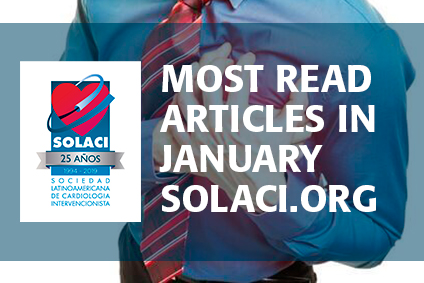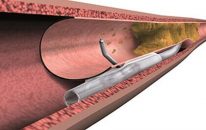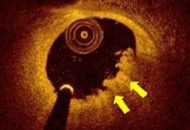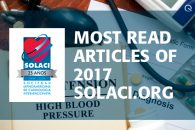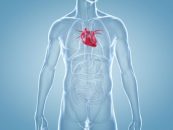1) The 10 Commandments of ESC’s New STEMI Guidelines The authors have given an entertaining account of the most relevant points and differences between the new STEMI guidelines and the prior ones, from 2014. Read more 2) Burnout Syndrome among Cardiologists For the first time, the American College of Cardiology (ACC) has carried out a survey on this phenomenon,…
Angioplasty vs. Surgery in Long-Term Critical Ischemia
Critical ischemia is the most advanced form of peripheral arterial disease, and it is characterized by ischemic rest pain and ulcers or gangrene. Revascularization is obviously positioned as the first-line treatment, and guidelines recommend both possible strategies (surgery or angioplasty) largely based on the findings of the BASIL trial (British Angioplasty versus Surgery in Ischemic…
The 10 Commandments of ESC’s New STEMI Guidelines
The authors have given an entertaining account of the most relevant points and differences between the new STEMI guidelines and the prior ones, from 2014. The article features 10 points resembling the ten commandments, which makes it easy to read, compared to the tedious task of reading the complete guidelines. 1) The emergency systems should help…
The Importance of Knowing Which Conduits Will a Surgeon Use for Revascularization
Whether a second arterial conduit improves outcomes in patients undergoing myocardial revascularization surgery is and will remain unclear until the 10-year results of the ART (Arterial Revascularization Trial) are published. Consequently, arterial conduits other than the left internal thoracic artery are seldom used in daily practice. Using a database including 126 non-federal hospitals in California, researchers…
Incidence of Cancer in Adult patients with Congenital Heart Disease
Adults with congenital heart disease are exposed to cumulative radiation doses, from multiple catheterization procedures. Seeing as these patients are exposed since early age, the chance of stochastic effect due to radiation exposure are relatively higher than that of the elderly population. It is clear the chance of incident cancer in adults with congenital heart disease is higher…
Dyspnea and Chronic Total Occlusion: A Symptom That We Can (Attempt to) Improve
Dyspnea is one of the most challenging symptoms as regards its assessment and treatment in patients with coronary disease, since it may stem from both cardiac and non-cardiac causes. Patients in whom dyspnea is the sole symptom of coronary disease are at a higher risk of not receiving adequate treatment, and their short- and long-term…
OCT Follow-Up of Plaque Erosion with Medical Therapy and Without Stenting
Most acute coronary syndromes (ACS) are caused by the following three different pathologies: Plaque rupture Plaque erosion Calcified nodule In daily clinical practice, all patients who experience them are treated with angioplasty, regardless of which of these physiopathologies led to the ACS in each case. Some early reports indicate that patients with plaque erosion might…
WIN TAVI: The Largest Female TAVR Registry So Far
Courtesy of Dr. Carlos Fava. In most randomized or observational studies, women comprise more than 50% of patients undergoing TAVR, and they have showed better evolution, compared against surgery. The main differences between men and women with severe aortic stenosis are that women have smaller annular dimension, shorter distance to coronary ostia, smaller peripheral arteries, and…
The 9 most read scientific articles of 2017 in interventional cardiology
1) New High Blood Pressure Guidelines The wait is finally over: the high blood pressure guidelines that have been in the works for the past 3 years saw the light of day at the American Heart Association (AHA) 2017 Scientific Sessions. Read more 2) Nearly half of interventional cardiologists may have pre-cataract lesions This statement is based on eye…
Important Study Suggests that Rotational Atherectomy Is Feasible with Transradial Access
Rotational atherectomy is a very important tool in the treatment of heavily calcified and non-dilatable lesions. Historically, transfemoral access has been the gold standard due to a perceived need for large-bore guidewire catheters in order to use spheroids for proper debulking. Nowadays, rotational atherectomy has evolved towards a technique that aims to modify plaque for…
